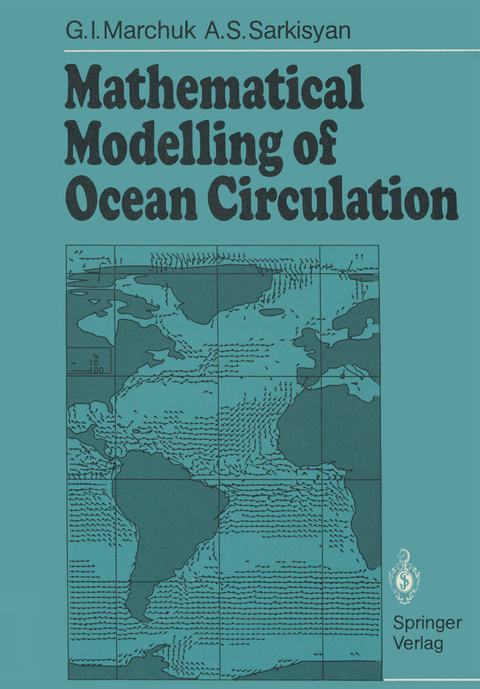
Mathematical Modelling of Ocean Circulation
Springer Berlin (Verlag)
978-3-642-64816-8 (ISBN)
1 Formulation of the Problem, Transformation of Equations and Elaboration of Ocean Circulation Models.- 1.1 Initial Equations, Their Simplification and Transformations.- 1.2 Diagnostic Sea Current Models.- 1.3 Some Numerical Methods of Solving Simplified Equations of Hydrodynamics.- 2 The Simplest Methods of Difference Approximation and Constructed Equations Solution.- 2.1 The Construction of Difference Grids.- 2.2 The Methods of Approximation and Equation Solutions.- 3 Numerical Methods of Solving Ocean Dynamics Problems.- 3.1 The Construction and Methods of Solving Simplified Problems of Ocean Dynamics.- 3.2 The Operator Representation of the Problem and the Principal Algorithm of the Splitting.- 3.3 The Evolutional Statement of the Problem.- 3.4 The Difference Schemes for the Equations of Motion.- 3.5 The Approximation of Adaptation Equations by Spadai Variables.- 3.6 The Approximation of the Adaptation Equations by Time.- 3.7 The Choice of the Parameters for Approximation in the Simplest Model.- 3.8 The Organization of the Numerical Algorithm.- 4 The Stationary Problems of Ocean Dynamics.- 4.1 The Statement of the Linearized Problem of the Ocean Climatic Condition.- 4.2 The Simplest Model of the Stationary Ocean Currents.- 4.3 The Ocean Dynamics Model, Taking into Account the Wind-Driven Currents.- 4.4 The Difference Operators of the Ocean Dynamics Problem and the Methods of Approximation.- 4.5 The Iterative Processes for Solving the Ocean Dynamics Difference Equations for the Barotropic Component.- 4.6 The Solution of the Difference Equations of the Ocean Dynamics Baroclinic Component.- 4.7 The Modified Iterative Process.- 4.8 The Simplest Model of Ocean Dynamics, Taking into Account the Non-Linear Turbulent Exchange.- 4.9 The Statement of Several Non-Linear Problems.- 4.10 The Problem of Non-Stationary Adjustment of Flow Fields to Atmospheric Disturbances.- 4.11 The Formation of the Thermocline in the Ocean.- 5 The Analysis of the Results of Calculations.- 5.1 On the Results of Diagnostic Calculations of the Currents in Different Oceanic Basins.- 5.2 The World Ocean Surface Topography and the Surface Gradient Currents.- 5.3 The Large-Scale Circulation and Seasonal Variation of the World Ocean Waters.- 5.4 The Hydrodynamic Adjustment of the Ocean Temperature, Salinity, Density and Flow Fields.- 5.5 The Diagnostic Calculations of Flows and the Adjustment of the Hydrological Elements of the North Atlantic.- 5.6 The Diagnostic Calculations of Flow in the Equatorial Belt of the Ocean.- 5.7 The Calculation of Flows in the Black Sea Offshore Zone.- References.
| Erscheint lt. Verlag | 16.9.2011 |
|---|---|
| Zusatzinfo | XV, 292 p. |
| Verlagsort | Berlin |
| Sprache | englisch |
| Maße | 170 x 244 mm |
| Gewicht | 540 g |
| Themenwelt | Naturwissenschaften ► Geowissenschaften ► Geografie / Kartografie |
| Naturwissenschaften ► Geowissenschaften ► Hydrologie / Ozeanografie | |
| Schlagworte | combinatorics • fluid- and aerodynamics |
| ISBN-10 | 3-642-64816-9 / 3642648169 |
| ISBN-13 | 978-3-642-64816-8 / 9783642648168 |
| Zustand | Neuware |
| Haben Sie eine Frage zum Produkt? |
aus dem Bereich


